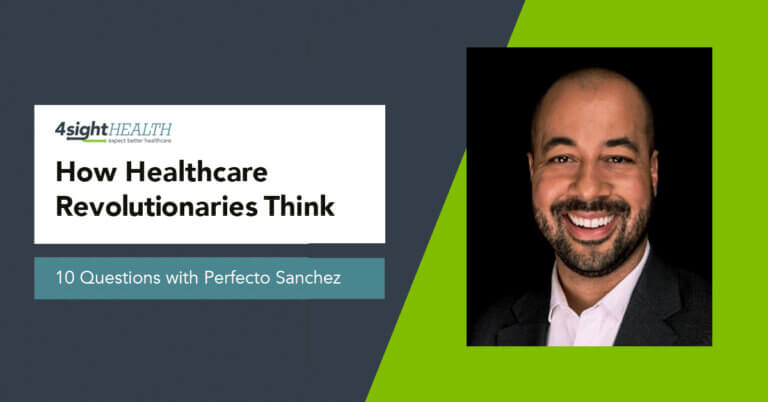January 16, 2024

Your First Choice Is Your Most Important Choice
“Where can I get the best care?” It’s an important and frequent critical question asked appropriately by people concerned with their healthcare.
As a busy, triple board certified and practicing physician in internal medicine, rheumatology and geriatrics for 23 years, this question frequently competed effectively with, “What do I have?” “What can I do about it?” and “What is going to happen to me long term?” that I tried to answer at every first clinical encounter, whether a patient or family asked.
Again, as president and CEO of a successful two-hospital, 716-bed system — CMS 5 Star, Leapfrog “A” rated, and top-of-its-game financially — I was also asked to direct patients, families and large communities to care that was considered the best.
Now as a chief medical officer for the Blue Zones Project, my focus is on preventing illness to obviate the need to ask for directions to the repair shop. The differences now between my first two roles are three-fold.
- I am not prejudiced to keep patients local for financial advantage even though patients do like to sleep in their own beds.
- Objective information is much more readily available, so the patronizing behavior of previous generations, namely information asymmetry, has been mostly erased.
- People are more sophisticated and appropriately demand a better customer experience (CX), which translates in the healthcare industry to patient satisfaction, a relatively easy metric to obtain and share.
Opportunity to Address the Current Problem
“Healthcare is a terminal illness for America’s governments and businesses. We are in big trouble.” This provocative statement is from the 2009 book, “The Innovator’s Prescription,” co-authored by Clayton Christensen, Harvard Business School’s famous professor noted for creative destruction. Disruption, while not necessarily good for incumbent providers of services and products, is typically positive for those who are beneficiaries of these deliverables. In healthcare, the beneficiaries are patients who are also the ultimate payers for care. Wages, taxes, and/or direct payments from patients fund the system. [1]
Broadly considered, healthcare has six major industries or entities that are considered incumbents. Major category groups start with payers who desire lower expenditures. These funders are federal, state, and local governments (46%), employers and private businesses (27%), uninsured and underinsured (15.5%), and the remaining (11.5%) who pay on their own. These payers for patients should demand quality care, which is not only the right thing to provide but also lower costs.
The next five segments of the Healthcare Industrial Complex® provide services or products:
- Physicians/non-physician caregivers
- Hospitals/healthcare systems
- Drug companies
- Device manufacturers
- Medical insurers
The business model for drug companies, device manufacturers and insurers needs additional explanations.
Drug companies and device manufacturers’ prices are based on what the market will bear and the need, whether perceived or necessary. Insurance companies take the premiums paid by individuals or companies, then manage risk, profit from investments, and take significant remuneration before returning the leftovers to the system.
The dynamic tension that exists between patients/payers who want lower costs and the five segments listed above can be decreased by making objective facts transparent for all.
Facts Vs. Entertainment
Early in my career, when I had the privilege and opportunity as a young medical staff elected officer, I counseled new physicians in southwest Florida who uniformly wanted to succeed in building a practice about “Triple A” therapy. At the time, the meaning of “Triple A” was Ampicillin Anytime Anywhere. Antibiotic choice has since multiplied manyfold as have therapeutic indications, thus making the phrase obsolete.
However, in the 1980s “Triple A” was easy to remember for nervous novice physicians during an interview and about to start a career, particularly when the mnemonic was now presented as Availability, Affability and Ability. Both physicians and patients could easily relate and rate availability and affability. Did you easily get an appointment? — which is not hard when a practice first opens — and was the non-physician caregiver or physician engaged and interested, and actively listening? Common sense answers the questions of availability and affability.
Now the hard part, how can a patient or patient’s family judge quality? Particularly when faced with an illness and while trying to avoid being confrontational, which could affect the affability part of the doctor-patient relationship.
Life has changed, mostly for the better. Over the past almost 50 years the healthcare industry has migrated from one-to-one relationships to overwhelming marketing campaigns including billboards, TV, radio, print, sporting events, social media and an intense digital presence. Heaven forbid a patient interested in a specific symptom, physical abnormality or disease try searching for internet information. She or he will be inundated with potential providers, treatments and other information for months to come.
According to Statista, “During the last measured period, there were 54,546 healthcare and medical apps available on the Google Play Store, a small decrease compared to the previous quarter. Between the beginning of 2020 and the end of 2021, the number of Health apps available to Android users via the Google Play Store kept growing, reaching over 65,300 during the last quarter of 2021.” [2]
The number of consumer digital health apps ballooned last year, with more than 90,000 new ones introduced in 2020, according to a new report by the IQVIA Institute for Human Data Science on digital health trends. “The report found there are now more than 350,000 digital health apps available to consumers. While many are geared toward general wellness or fitness, and some are middling in quality, specific disease management apps are increasing in number. Apps that focus on managing specific diseases or health conditions now make up 47% of apps, compared with 28% in 2015. Mental health, diabetes and cardiovascular disease-related apps make up almost half of condition-specific apps.” [3]
Moving Up to Objective Information
 Both accurate and subjective metrics have evolved, making marketing influences almost meaningless to smart healthcare consumers. Overwhelmingly, rational decision-making can and does lengthen healthy life expectancy.
Both accurate and subjective metrics have evolved, making marketing influences almost meaningless to smart healthcare consumers. Overwhelmingly, rational decision-making can and does lengthen healthy life expectancy.
Centers of Medicare and Medicaid Services (CMS) is widely available, current, primarily objective and continues to mature. The site is wonderful for comparing hospitals, skilled care facilities, psychiatric facilities and outpatient facilities, patient satisfaction and continues to evolve with objective metrics. Lacking are physician competencies and the fact that some of the self-reported data is subjective and not easily audited. Nonetheless, a conscientious patient or concerned family should start any search for elective care by finding five-star facilities, even if this choice is not as convenient as a nearby facility with a lower status. In the end, not sleeping in your own bed is a far smaller inconvenience than living with a bad but avoidable outcome. [4]
Another trustworthy service is the Leapfrog Group, which was formed over 20 years ago by large manufacturers that desired better, safer, and less expensive healthcare for their colleagues. Leapfrog’s stated desire is to “trigger giant leaps forward in the safety, quality and affordability of U.S. healthcare by using transparency to support informed healthcare decisions and promote high-value care.” Sharing rates of errors, injuries, accidents, and infections is an essential first step in selecting care. [5]
Leapfrog’s grading system is straightforward from “A” to “F” and is released twice a year. Leapfrog’s website appropriately advocates selecting a hospital for an elective procedure and then further examining the quality for the specific need of the patient. For example, for obstetrical care you need to find the rates for premature delivery or cesarean sections.
Other less well-known but essential transparent quality organizations include The Society for Thoracic Surgeons, which reports surgical outcomes on Adult Cardiac Surgery, General Thoracic Surgery and Congenital Heart Surgery with grades of one to three stars. [6]
Organ transplant success statistics have been organized by the United Network for Organ Sharing (UNOS). Thus far, UNOS has focused successfully on increasing the number of successful transplants, which is noble but incomplete. The information comparing programs is known to the professionals with plans to share these facts with the public in the future. A potential recipient of an organ can improve his or her chances for survival by being informed. [7]
Invitro fertilization statistics have also matured over the years with Centers for Disease Control and Prevention supporting National Assisted Reproductive Technology. [8]
U.S. News and World Report has had a national reputation of being an early evaluator of healthcare systems. Payment by healthcare systems to U.S. News and World Report for badges to be used in local marketing does not influence ratings. “Revisiting U.S. News & World Report’s Hospital Rankings — Moving Beyond Mortality to Metrics that Improve Care” reviews an historical reliance of morbidity, mortality and subjective reliance on reputation to a broader use of statistics by U.S. News and World Report similar to CMS’s noted above. [9]
Newsweek partnered with Statista requiring healthcare professionals to recommend hospitals within their state and across the nation. This subjective information was combined with patient satisfaction, CMS quality rankings and some information from The Joint Commission. Again, going back to CMS as the primary source removes the “popularity contest” aspect of a patient obtaining the best information. [10]
Other sites mandate “paying” to use the title for marketing although the title is based on a combination of subjective opinions of other alleged experts in the field and objective metrics. Making everyone a winner dilutes the prestige of the title.
Physicians’ Competence
Once a system has been identified, getting to the best physician for one’s needs is not as easy a process as identifying a healthcare system. Board certification — which is designed to remove the bottom 10% — is an early, easy screen.
Compensation by a system should favor quality over quantity. Incenting caregivers to see more patients typically leads to shorter rushed visits whereas paying for better outcomes helps everyone in the long run.
Encouraging facile collaboration among physicians is a positive characteristic that is facilitated by having physicians sharing nearby space as opposed to isolated solo practice. Exceptions exist but walking down the hall to get a curbside consult can be very helpful.
Physician evaluation services are available but focus on professionals who have demonstrated some reason for review rather than trying to identify the top caregivers in a specialty. Certainly, it’s an important issue but not really what a patient or family is searching for when desiring optimal care. [11]
Conclusion
Focusing on quality rather than marketing helps everyone live longer, happier and healthier lives. Narrowing the standard deviation is not enough, as noted by Clayton Christensen. Without moving the mean in the right direction, healthcare’s problems will continue unabated.
Transparency accompanied by objective metrics will narrow the standard deviation while moving the mean in the right direction for all the stakeholders — patients, non-physician caregivers, physicians, healthcare systems, insurers, pharmaceutical companies and device manufacturers. Payers will benefit as complications decrease thus lowering overall costs.
Sources
- “The Innovator’s Prescription: A Disruptive Solution for Healthcare, Clayton M. Christensen, Jerome H. Grossman, Jason Hwang, 2009.
- “Number of mHealth apps available in the Google Play Store from 1st quarter 2015 to 3rd quarter 2022,” by Laura Ceci, Dec 8, 2023.
- “Digital health apps balloon to more than 350,000 available on the market, according to IQVIA report,” by Emily Olsen, Aug 4, 2021.
- “Hospital Quality Initiative Public Reporting,” Centers for Medicare and Medicaid Services, September 6, 2023.
- Leapfrog Group, “Mission and Vision,” Mission and Vision | Leapfrog (leapfroggroup.org).
- The Society of Thoracic Surgeons, STS Public Reporting, STS Public Reporting | STS.
- “Transparency: Increase transparency in OPO, hospital and system performance by making more comparative data available publicly,” by United Network for Organ Sharing, 2023.
- Centers for Medicare and Medicaid Services, National Center for Reproductive Services, Data Collection, June 7, 2023.
- “Revisiting U.S. News & World Report’s Hospital Rankings — Moving Beyond Mortality to Metrics that Improve Care,” Mallika L. Mendu, MD MBA, corresponding author1,2 Allen Kachalia, MD JD,3 and Sunil Eappen, MD MBA4,5, July 2020.
- “World’s Best Hospitals 2023,” World’s Best Hospitals 2023 – Top 250 (newsweek.com).
- “Predictors of Physician Performance on Competence Assessment, Findings from the Center for Personalized Education for Physicians” by Elizabeth Grace, Elizabeth Wenghofer, and Elizabeth Korinek, Journal of the Association of American Medical Colleges, 2014.





